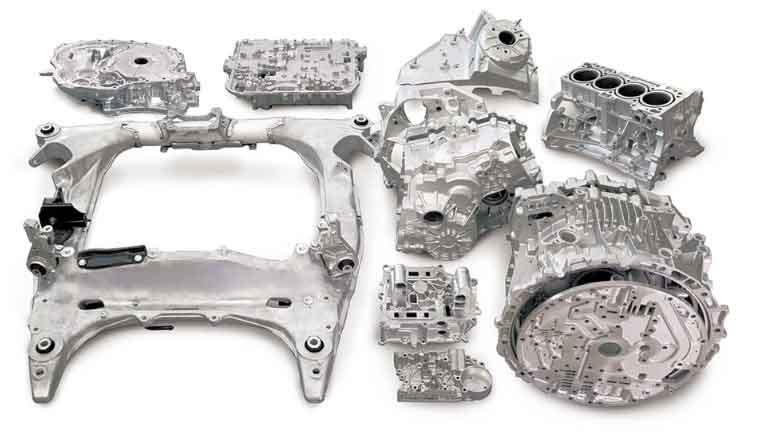Efficiency is a critical aspect of die casting, and advancements in technologies and materials have significantly contributed to enhancing efficiency in the process. Here are some key advancements that have improved efficiency in die casting:

- High-Speed and Multi-Cavity Die Casting: High-speed die casting technology allows for faster injection speeds and shorter cycle times, increasing production efficiency. This technology enables manufacturers to achieve higher productivity without compromising the quality of the castings. Multi-cavity die casting further enhances efficiency by producing multiple parts in a single shot, reducing cycle times and increasing output.
- Hot Chamber Die Casting: Hot chamber die casting is a specialized technique suitable for materials with low melting points, such as zinc alloys. This process eliminates the need for molten metal ladling, as the metal is automatically supplied from a furnace to the die casting machine. Hot chamber die casting reduces production time and improves efficiency, particularly for high-volume production of small to medium-sized components.
- Cold Chamber Die Casting: Cold chamber die casting is used for alloys with higher melting points, such as aluminum and magnesium. This process involves manually ladling molten metal into a cold chamber before injecting it into the die. Cold chamber die casting allows for the casting of larger and more complex parts, providing flexibility in component design and production.
- Automation and Robotics: Automation and robotics have been increasingly integrated into die casting operations, enhancing efficiency and productivity. Automated systems can handle tasks such as mold spraying, part extraction, trimming, and quality inspection. Robotics provide precise and repeatable actions, ensuring consistent quality, reducing cycle times, and minimizing the risk of operator injuries.
- Advanced Mold Designs: Computer-Aided Design (CAD) and simulation software have revolutionized mold design and optimization. Advanced mold designs enable improved cooling, gating, and venting systems, leading to faster solidification, reduced cycle times, and enhanced part quality. Mold flow simulation software allows for the prediction and optimization of the filling and solidification process, reducing the need for physical trial and error.
- High-Quality Materials: The development of advanced materials specifically designed for die casting has improved efficiency and performance. Aluminum, magnesium, and zinc alloys with superior fluidity and solidification characteristics allow for faster filling and solidification, reducing cycle times. These materials also exhibit excellent mechanical properties, providing strength, durability, and lightweight characteristics to the cast components.
- Process Monitoring and Control: Advanced monitoring and control systems have been implemented to enhance efficiency and quality in die casting. Real-time monitoring of process parameters such as temperature, pressure, and injection speed ensures consistency and reduces the risk of defects. Closed-loop control systems automatically adjust process variables to maintain optimal conditions, resulting in improved efficiency and part quality.
- Energy-Efficient Equipment: Manufacturers have made significant strides in developing energy-efficient die casting equipment. Modern die casting machines incorporate energy-saving technologies such as variable frequency drives, efficient hydraulic systems, and optimized heating systems. These advancements help reduce energy consumption, minimize heat loss, and contribute to overall process efficiency.
By embracing advanced die casting technologies and materials, manufacturers can significantly enhance efficiency in the die casting process. These advancements lead to shorter cycle times, higher productivity, improved part quality, reduced energy consumption, and overall cost savings. As technology continues to evolve, die casting will continue to benefit from further advancements, further enhancing its efficiency in the manufacturing industry.
